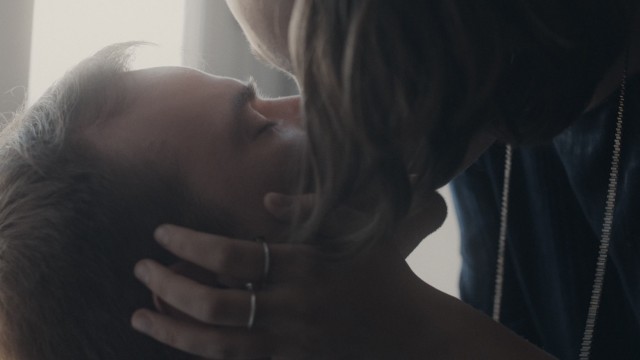Why do we make films? It was a question posed to me once as a teenager, and precocious-me, armed with a Sony Hi-8 camera and Tarantino-dreams in suburban Southern California, felt I had a good answer—I wanted to communicate things that were True.
As I aged, and embarked on a post-modern liberal arts education, it’s an answer that has, on occasion, struck me as embarrassingly high-minded. And yet, as I’ve come to know many more accomplished filmmakers than myself, I’ve also learned that it is not a rare impulse. It’s a sentiment that I’ve heard over and over again, from artists that work in diverse genres and even disciplines. As my founding partner at Short of the Week, Andrew Allen frequently likes to say, stories are how we make meaning out of the world. We’re all searching for connection, for communion, and we use stories as tools. No matter how fantastic a plot is, whether it is approached in a spirit from slapstick to melodrama, a story fundamentally relies on a kernel of something universal and relatable—a moral conflict, a parent’s love, a dream realized, or deferred.
Forever Now is a film more so than any of the last couple of years I’m jealous to not have made. Reaching back to that formative yearning on my part, it is almost agonizingly True. A simple film to describe, yet subtle and layered, it wades into the messiness of romantic relationships with a brave spirit, digging through sediment to unearth the mix of longing, insecurity, and affection that underlies most couples.
My goal was to portray a mutual breakup as honestly as possible.
An uncomfortably intimate breakup film, the film’s originality and power springs from it’s premise. William and Cecillie, played by Ferdinand Falsen Hiis and Frederikke Dahl Hansen, agree to break-up, and subsequently decide to dose themselves with MDMA (commonly referred to as Ecstasy) in order to treat the situation “with love”. If you’re familiar with MDMA, you know that it is very effective at dissolving the boundaries of self and encouraging intense emotional connection. Cocooned in the safety of their high, the couple are able to open up about themselves, and each other, in revealing ways.
We like to think of ourselves as evolved, emotionally intelligent partners, but what we see in on-screen breakups is heavy on histrionics—performative anger, recrimination, and naked grief. Attempting to depict the alternative on-screen by imaging a respectful or tender conversation can ring equally false though—it can often be pedantic, a writerly exercise that betrays a calm and self-knowledge on behalf of its characters that few possess in these charged moments. The addition of drugs to the mix of Forever Now cleverly sidesteps these competing dilemmas. William and Cecillie achieve a level of intimacy that is painfully raw, but not through eloquent declarations. Instead it is through loving hints and references to feelings known, but not spoken.
There is devastating power to the couple’s initial conversation once high, where the pair speak of whether William has ever been unfaithful. Through humor and the kind of pointed teasing that is common in relationships but looks monstrous from the outside, William thumbs the insecurity at the core of Cecillie’s identity (calling her a dwarf) while still trying to soothe her. Cecillie jokes of self-abasement that lies in her future, a kind of manipulative guilting that is shared with levity, but communicates grief and anger, while eliciting the reassurance of pain from one’s partner. Forever Now traffics in these kind of shared truths, revealing so much about the characters in sideways and oblique fashion. You can feel the longing to share and reveal on the characters parts, but these admissions touch upon aspects so personal, so fraught with past conflict, that they need to be danced around. Yet the enormity of the circumstance and the prompting of the MDMA, let these admissions slip out around protective walls in a delicate, coded, pas de deux.
The young student director of Forever Now, Kristian Håskjold, had a roadmap for this kind of interaction. He based the film off of a similar experience he had when he and his girlfriend of two years broke up. Not only did they take MDMA, they recorded their conversations, some of which is adapted into the film. MDMA users will notice the production cleverly mimics some of the drugs visual effects, as the titles of the film have fuzzed edges, and the sequences in the midst of the high are shot with a lenses filter to provide a bit of diffusion around the edges.
Despite the skeleton that personal experience provided, the film hinges on the performances of Ferdinand Falsen Hiis and Frederikke Dahl Hansen and their ability to access this level of drug-aided intimacy, and it’s here that Håskjold shows his preternatural maturity. Rare for a dramatic short, Håskjold decided to work with his actors to improvise most of the film. Intense workshopping and rehearsals honed the characters long before shooting, and lead to an arduous filming process, as key scenes were done as many as 8 times in 10-30 min uninterrupted takes. This stripped down search for true emotion extended to the film’s shooting style, as the film’s DP, Christian Houge Laursen, employs a handheld camera that is unnervingly close to the subjects, and relies almost entirely on natural lighting. Not only does this mirror the “authenticity” desired of the acting process, it allowed the actors relative freedom of the space for their improvised scenes. Flashbacks are cleverly incorporated as snippets—brief impressions that inform the drama within the apartment, and are shot outside in the daytime to better contrast the timelines and not incur audience confusion. In an interview with Directors Notes, Håskjold reveals that these flashback scenes were shot months after the primary apartment sequence, allowing him to assemble a rough cut and better figure out what was needed from these shots.
My favorite film of SXSW 2017 where it won the Jury Prize, the film is a perfect combination of motivation and craft to bring new depth to a familiar story. It premieres today online as a Staff Pick Premiere, and announces a mighty new talent in Håskjold, a Danish-Norwegian director who lives in Copenhagen and is studying at the Danish film school SUPER16. He is in post production with the school film A BAKER (working title), a story about a middle-aged baker, who can’t connect with his family and his surroundings and slowly gets mental as the film develops. The film will be finished in April and should be expected at festivals shortly thereafter. He is also finishing the animation short TV pilot SIMON & MARIUS & DICK PICS, which is a teen-buddy-comedy.

 Jason Sondhi
Jason Sondhi
